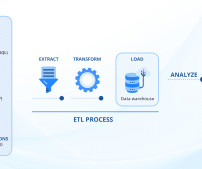Understanding Data Warehousing Concepts for Business Analysts
Business Analysis Knowledge Share
OCTOBER 24, 2023
Data is typically organized into tables and dimensions, making it easy for Business Analysts to access and analyze. Business Intelligence Tools Business Analysts rely on Business Intelligence (BI) tools to access, query, and visualize data stored in the warehouse. Implement data stewardship practices to maintain data quality.













Let's personalize your content